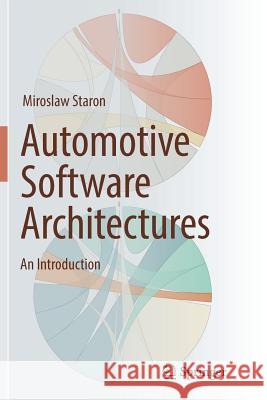Automotive Software Architectures: An Introduction » książka
topmenu
Automotive Software Architectures: An Introduction
ISBN-13: 9783319864419 / Angielski / Miękka / 2018 / 237 str.
Kategorie:
Kategorie BISAC:
Wydawca:
Springer
Język:
Angielski
ISBN-13:
9783319864419
Rok wydania:
2018
Wydanie:
Softcover Repri
Ilość stron:
237
Waga:
0.39 kg
Wymiary:
23.37 x 16.41 x 1.4
Oprawa:
Miękka
Wolumenów:
01
Dodatkowe informacje:
Wydanie ilustrowane











